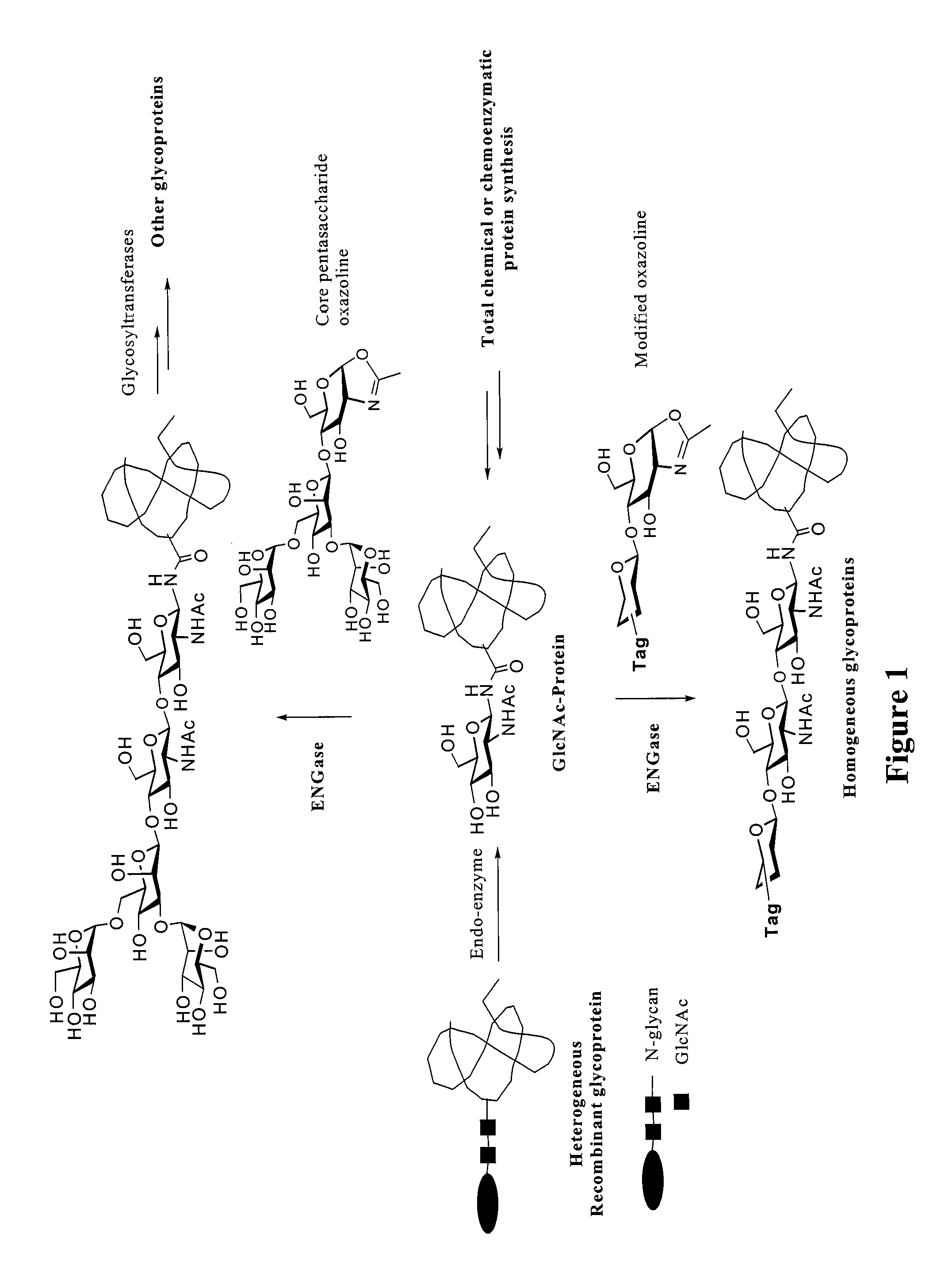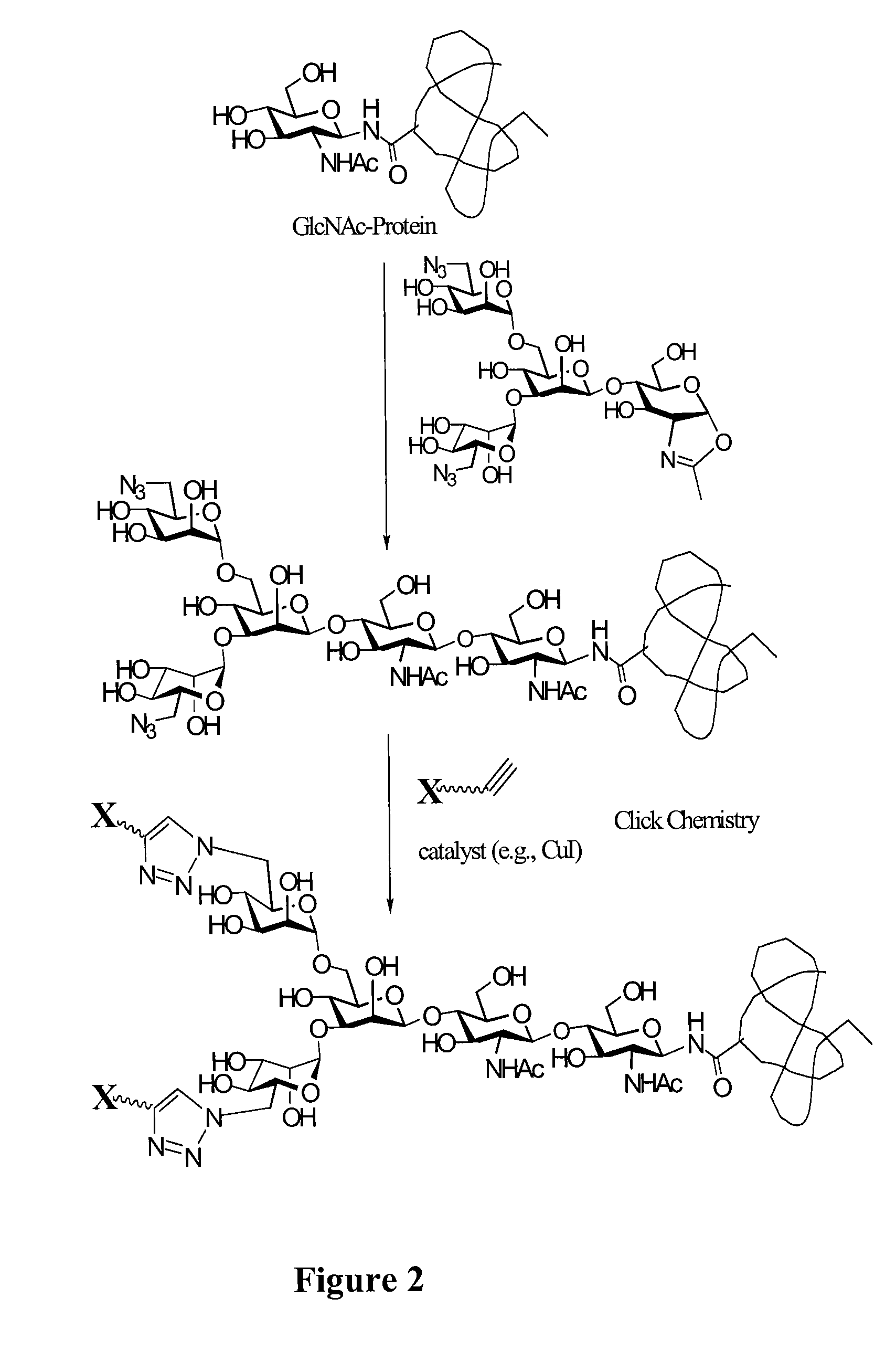Glycoprotein synthesis and remodeling by enzymatic transglycosylation
a technology of enzymatic transglycosylation and glycosylation, which is applied in the field of glycoprotein synthesis, can solve the problems of heterogeneity in glycosylation, the inability to directly deduce the sequence, and the structural micro-heterogeneity of glycoproteins, etc., and achieves enhanced in vivo activity, less immunogenicity, and prolonging the half-life time
- Summary
- Abstract
- Description
- Claims
- Application Information
AI Technical Summary
Benefits of technology
Problems solved by technology
Method used
Image
Examples
examples
[0123]To further explore the potential of this promising chemoenzymatic method, the synthesis and evaluation of an array of oligosaccharide oxazolines was conducted. As shown in FIG. 5, multiple oligosaccharide oxazolines were prepared by the synthesis scheme shown in FIG. 6 The different oxazolines were used as donor substrates for glycopeptide synthesis were prepared to probe the substrate requirement for the Endo-A catalyzed transglycosylation and to further explore the potential of the chemoenzymatic method for constructing both natural and modified N-glycopeptides.
[0124]Synthesis of some oligosaccharide oxazolines as shown in FIG. 6: The Manβ1→4GlcNAc moiety is a core disaccharide of N-glycans. This core disaccharide moiety was previously synthesized through stereocontrolled glycosylation of monosaccharides [11, 14, 18] Here we describe an alternative synthesis of the Manβ1→4GlcNAc core disaccharide and related derivatives using the readily available disaccharide 2,3,4,6-tetra-...
PUM
| Property | Measurement | Unit |
|---|---|---|
| pH | aaaaa | aaaaa |
| wavelengths | aaaaa | aaaaa |
| wavelengths | aaaaa | aaaaa |
Abstract
Description
Claims
Application Information
 Login to View More
Login to View More - R&D
- Intellectual Property
- Life Sciences
- Materials
- Tech Scout
- Unparalleled Data Quality
- Higher Quality Content
- 60% Fewer Hallucinations
Browse by: Latest US Patents, China's latest patents, Technical Efficacy Thesaurus, Application Domain, Technology Topic, Popular Technical Reports.
© 2025 PatSnap. All rights reserved.Legal|Privacy policy|Modern Slavery Act Transparency Statement|Sitemap|About US| Contact US: help@patsnap.com



